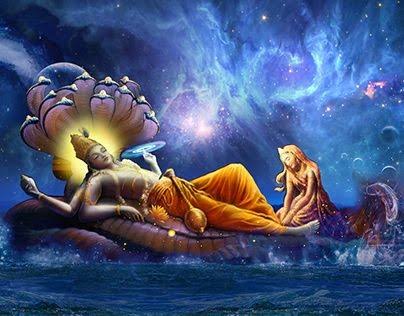God of knowledge and wisdom - Hayagrīva.
Hayagrīva, also spelt as Hayagreeva, is an incarnation of Lord Vishnu, with the head of a horse and a human body of brilliant white colour, white garments and seated on a lotus.
Hayagrīva, also spelt as Hayagreeva, is an incarnation of Lord Vishnu, with the head of a horse and a human body of brilliant white colour, white garments and seated on a lotus.

Hayagriva is worshipped as "Gnanaswaroopa”, embodiment of knowledge and wisdom.Our sages & seers are supposed to have derived their spiritual insights and extraordinary powers by the grace of #LordHayagriva
There are many other references to Hayagriva throughout the Mahabharata.
There are many other references to Hayagriva throughout the Mahabharata.

Lalitha Sahasranama, the thousand names of Mother Lalithambika is considered to have been taught by Him to Agasthya Rishi. There are several stories abt this unique avatar of Lord Vishnu. One of the versions is that LordVishnu revealed the Vedas to Brahma at the time of creation. 

Realising the power of these Vedas, two demons Madhu and Kaitabha stole the Vedas from Brahma and hid them at the bottom of the ocean. When Brahma sought Lord Vishnu’s help to retrieve them, Lord Vishnu took the Hayagriva form, killed the demons, and returned the Vedas to Brahma. 

Another version is found in Devi Bhagwat Purana. A demon named Hayagriva (one with the face of a horse), son of Kashyapa Prajapati, performed severe penance and obtained a boon from Goddess Durga that he could be killed only by another “Hayagriva” and none other. 

Having got this boon, he grew arrogant and started creating havoc in Devaloka. The hapless Devas turned to Lord Vishnu for help. But the boon proved too powerful even for Him as it was given by none other than the Supreme Goddess. 

Even after a prolonged and fierce battle, the demon Hayagriva remained invincible. The battle took its toll on Lord Vishnu. He proceeded to Vaikuntha to recuperate and replenish His power and strength. It's said that He sat in Padmasana and went into deep meditation (Yoga Nidra). 

The Devas wanted Him to resume the battle but none could arouse Him from His yoga nidra. So, Lord Brahma thought of a plan. He created termites that would gnaw at the bowstring and when the string broke, the resonant sound created would wake up the Lord. 

The string snapped with tremendous sound that reverberated thru the entire universe, but bcs of the force with which it snapped, Vishnu’s head got severed from His body and fell into Lavan Sagar. Brahma’s plan had backfired. The Devas were distressed and dismayed at the calamity.
Their only hope now was to invoke the Mother Goddess. She had always protected them in times of dire need, time and again. So they prayed to Her and sought Her help. Pleased with their prayers, She assured them that there was a divine purpose behind the incident. 

She said He would get His form back once the purpose was achieved.
She instructed them to attach the head of a horse to Vishnu’s neck,who would then become a “Hayagriva” and therefore in a position to slay the demon.Brahma attached the head of a white horse to Lord Vishnu’s body.
She instructed them to attach the head of a horse to Vishnu’s neck,who would then become a “Hayagriva” and therefore in a position to slay the demon.Brahma attached the head of a white horse to Lord Vishnu’s body.

Lord Vishnu then destroyed the demon.The incarnation, Hayagriva,came to be worshipped & revered as personification of all knowledge (Jnananandmayam devam), speech,vidya(education), of brightness of wisdom over darkness of ignorance,of the supremacy of the divine over the demonic. 

He's worshiped in a meditation pose also. This form is known as Yoga-Hayagriva.However, he's most commonly worshipped along with his consort Lakshmi and is known as Lakshmi-Hayagriva. Mahanavami of Navaratri and Śravaṇa-Paurṇamī are considered special for worshipping Hayagriva. 

@Sriniva05967795 story.
• • •
Missing some Tweet in this thread? You can try to
force a refresh


















